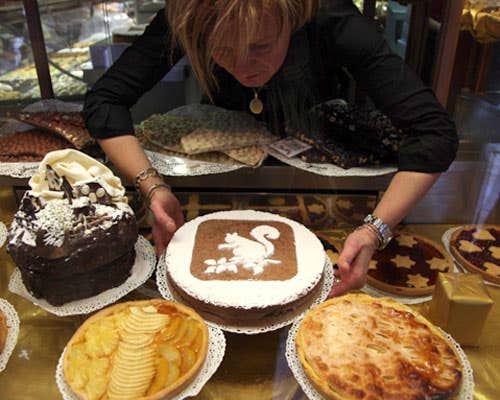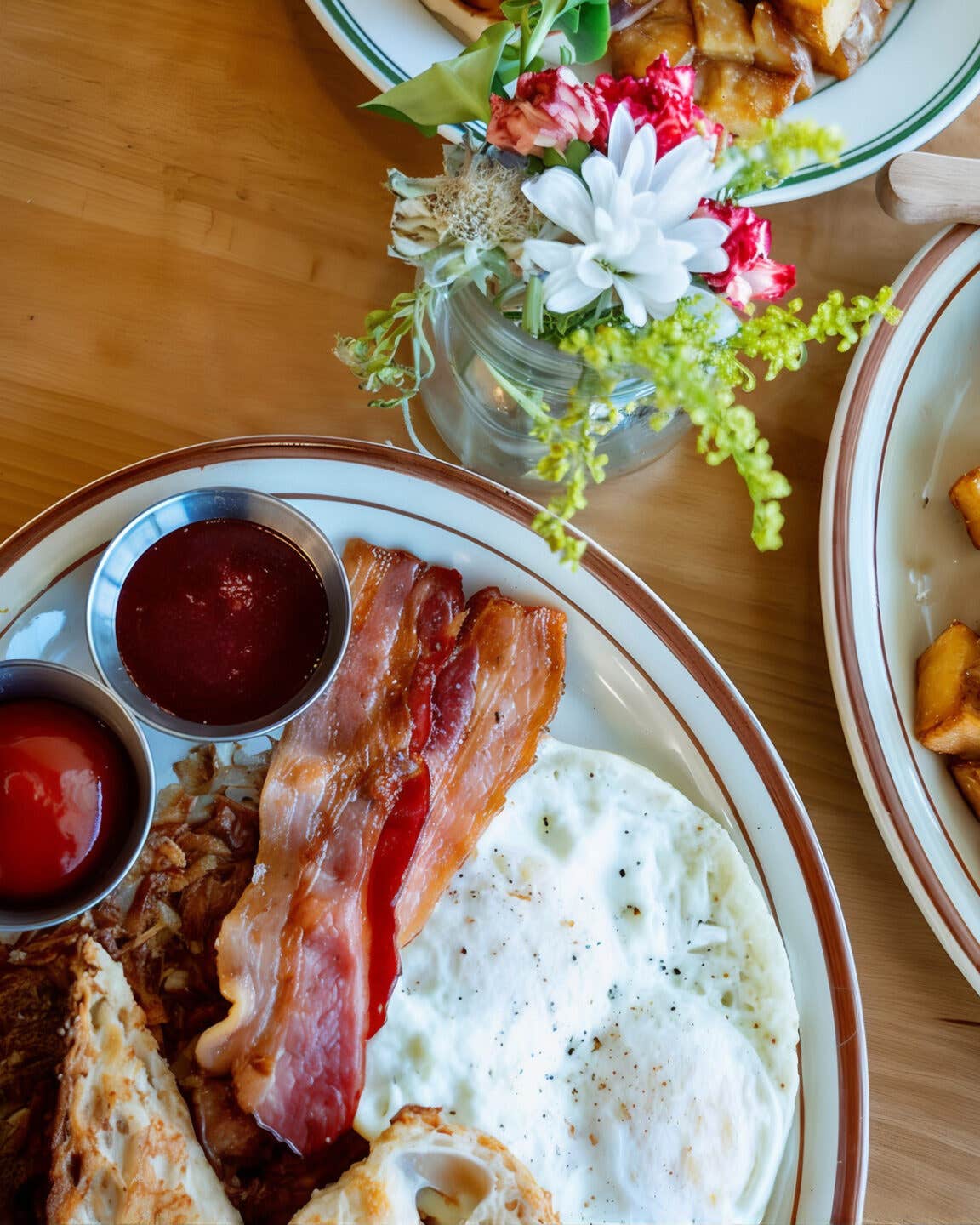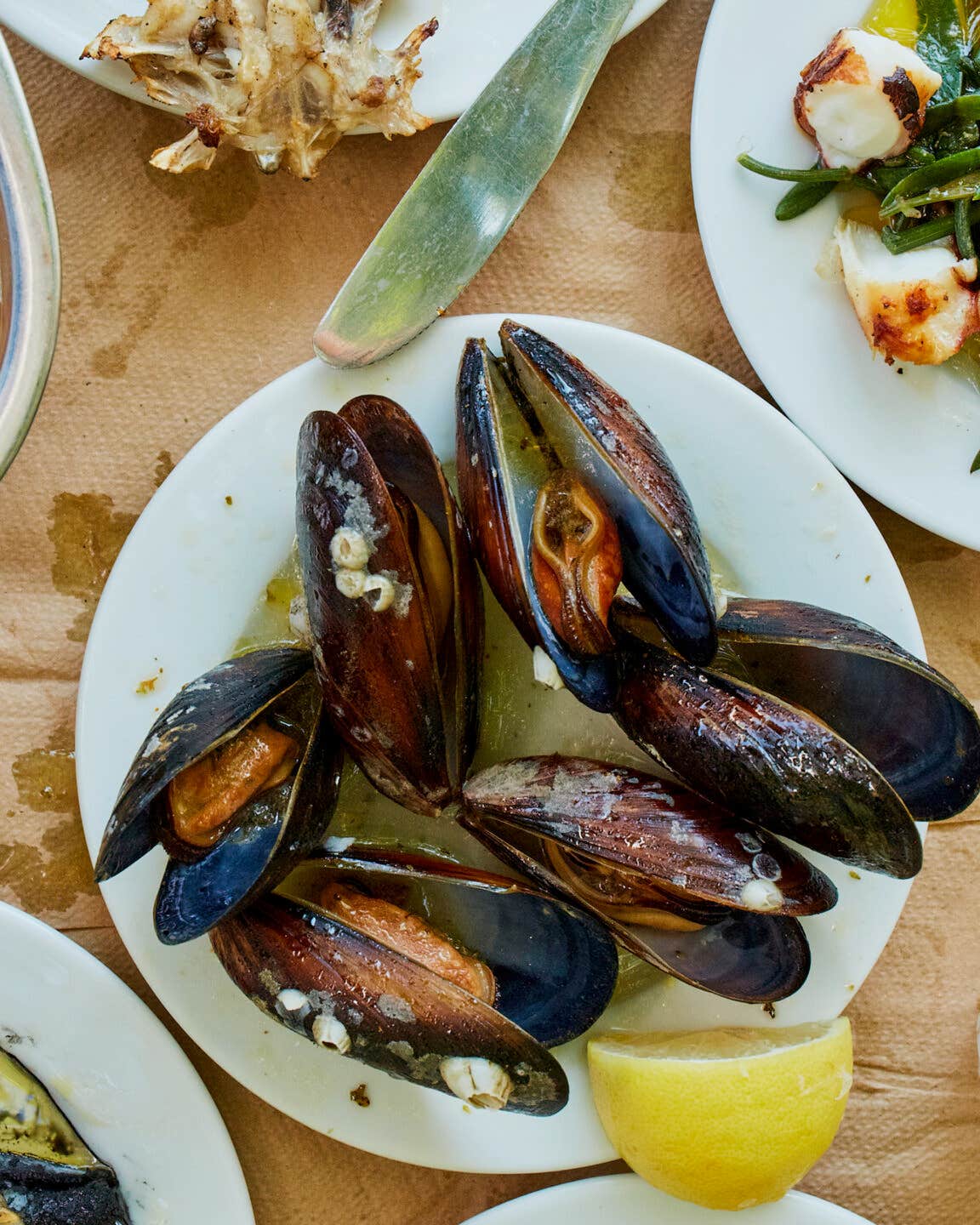
Home for the Holidays
In northern Italy, a cook reconnects with her family’s Christmas traditions
I'm a good Italian girl: no matter where I am when I wake up on December 22—and, since I work as a food and travel writer, I might be very far away—I catch a flight back to my mother's house to help her prepare Christmas lunch. Mom still lives in the town where I was born, in the Alpine village of Oulx, nearly 50 miles west of Turin. Oulx is technically in Italy (specifically, in the region of Piedmont), but it's only eight miles from the French border, and until the late 19th century the area belonged to France. As a result, the local culture is a mix of Gallic and Italian influences. When it comes to food, you're as likely to find fantastic crepes as you are lovely handmade pastas.
Most of the food that I cook with my mother, however, is neither French nor Italian: it is Occitan. Occitan is an ethnic group that dates back to the fifth century and is distinguished by its langue d'oc, an ancient tongue (which happened to be the language of the legendary Knights of the Round Table) from which Provençal and Catalan are derived. While the Occitan community inhabited large swaths of western Europe in the Middle Ages, it has dwindled to just a few geographical pockets in Spain's Catalonia, southern France (including the Languedoc region), and several valleys in the Italian Alps, such as Val di Susa, where Oulx is located. In Italy, the Occitan population is tiny—about 200,000—but we have a strong identity, defined by our language (which I learned from my parents) and our foodways, to which we cling fiercely. Occitan cooking in northern Italy is rustic, based on the cheeses and grains and vegetables that have long flourished here. While local Piedmontese food evolved over the centuries to become richer and more refined, Occitan cooking remained true to its roots as simple, satisfying peasant fare.
As distinct as our native cuisine may be, many Italians, even the Piedmontese, aren't familiar with it. It's rarely served outside the home, perhaps because people consider it too humble for restaurant fare. This annoys my mother; in fact, when Turin hosted the Winter Olympics in 2006, I took her to the region's official restaurant, and she was outraged that not a single Occitan dish was on offer. She summoned the manager over to our table and gave him a piece of her mind. Where were the cabiette, those wonderful gnocchi made with potato, egg, and celery? Or the savory beetroot pies called tarte' d carotta ruja? What about the Sant'Antonio apple cake, flavored and tinted with red wine, that Occitan cooks slice into small squares and serve with coffee? The poor man had to listen to her diatribe until, finally, she became hungry and reluctantly ordered off the menu. Still, her point was made.
My mother's love for Occitan cooking—and her love of cooking in general—is one of the reasons I make a point of getting home to help with the Christmas meal every year. She's a natural, intuitive cook, one of those people who can whip up dishes by heart and from scratch every time, using their senses rather than written recipes. When I started learning her holiday recipes, years ago, my main challenge was to continually stop Mom on her way to the cupboard or the fridge to measure her spoon of butter or glassful of milk so that I could scribble down the quantity. "What do you need that for?" she'd say. "Can't you feel by yourself that the dough is crying out for more milk?"
Christmas was the biggest event of the year when I was young, and Mom and her sister, my aunt Lidia, would start cooking days in advance. Most Italian families have their big meal on ChristmasEve, but since my family would always go to church that night, we celebrated with a lunch on Christmas Day. There would be at least a dozen people at the table, 18 if my mother's brothers, Uncle Marco and Uncle Candido, were attending the meal with their families. Regardless of the number of guests, my mom and Aunt Lidia would cook as if they were feeding an army of soldiers. Back then, I was in charge of minor jobs, like selecting parsley and celery leaves or beating egg yolks and sugar.
For as long as I can remember, the menu has included the same staples. It's a mix of Occitan dishes, from that savory beetroot pie to soupe crasse, a luscious cheese first course thickened with grissini breadsticks, and Piedmontese classics, such as ravioli, vitello tonnato (cold sliced veal with tuna caper sauce; our version is French-inspired, made with a mayonnaise- rather than a cream-based sauce), and brasato vitello (veal braised in barolo wine). There's always a slew of Occitan desserts—in addition to the wine-apple cake, we make a rum-spiked vanilla pudding called la tarte and a chocolate custard topped with floating icebergs of meringue, called la creme.
Nowadays, Christmas is different. Our family has shrunk: my father; Aunt Lidia and her husband, Uncle Secondo; and several others are no longer with us. There are no children, so we usually invite a few friends with kids—Christmas needs at least one child. Even still, I always return home, like an unfailing boomerang, from wherever I am (last year it was Texas; the year before that, Samoa), because I love the excitement of composing the menu with my mother (as if it's ever going to be anything different from last year's); the fun of buying groceries together again; the comfort and warmth of sharing space in her kitchen. Making this Christmas meal reminds me that I'm inheriting a special tradition, one that might otherwise disappear.
This year, I do as I always do: as soon as my plane touches the ground, I call Giampiero Ariassetto, my favorite butcher in Turin, and reserve the veal for the vitello tonnato and stewed brasato. Then I drive from Turin to Oulx, and when I get home, Mom and I brave the cold to go shopping for last-minute ingredients; this year we buy apples, vegetables, soft toma cheese from nearby Sauze d'Oulx for the soupe crasse, lard for the baked goods. Via Roma, in the center of town, is crowded with people doing the same thing; families walking arm in arm under twinkling Christmas lights, holding heavy shopping bags with their free hands.
The next morning, we start with the fillings and the doughs. We saute the beetroot with onions for the savory pie filling, mash the potatoes with celery for the gnocchi, then stew apple slices in red wine and spices for the pie. We make two different doughs: a yeasted one, which Mom covers in a red blanket as if it were a baby taking a nap, for the beetroot pie crust; and a milky, soft dough for the apple cake. One thing I've learned from cooking with my mom (and it's something that she learned from her mother) is that desserts need time to develop their flavors, so we always make them a day before the meal. I've adopted this rule as my own, and whenever I have friends over for a big meal, I tackle the sweets first.
While the beetroot pie and the apple cake are baking in the oven, we boil the veal for vitello tonnato; the meat also provides the broth and the filling for the ravioli. We prep for hours: mashing capers and tuna into homemade mayonnaise; making a fresh herb sauce in which we marinate anchovies; rolling out cabiette dumplings and stuffing dozens of ravioli. We cook nonstop for two days straight, and by the morning of Christmas Day we're as excited as everyone else to eat.
We set the table as if we're working in a Michelin-starred restaurant—the finest glasses, the prettiest plates. Guests begin to arrive: my brother Carlo with his girlfriend, and my friends Barbara and Angelo with little 18-month-old Tommaso (the requisite child). Platters are passed and compliments doled out, but my mom is our harshest critic; she's happy with the beetroot pie—crispy outside, with the creamy, slightly wet filling—but she thinks I wasn't generous enough in slathering the sauce on the vitello tonnato: "It doesn't matter that you are serving more sauce on the side!" she tells me between bites. "You have to strike the perfect ratio between meat and sauce by yourself." I make up for that shortcoming with the exemplary soupe crasse, which Mom admits is perfectly seasoned with onion, juniper, and peppercorns. Everyone goes back for seconds.
As is the case every year, the meal lasts late into the afternoon. Our guests leave, sated and sleepy, with heavy doggie bags. We decline their offers to help wash the dishes, preferring to do them ourselves so that we can chat about the food and what we might do differently next time. For our family and friends Christmas lunch was just another huge holiday meal, but for Mom and me it was, as it is every year, all about the joys of cooking together.
Roberta Corradin is the author of Taste and Tradition: A Culinary Journey Through Northern and Central Italy (Silvana Editoriale, 2010). She divides her time between Paris, Rome, New York, and southeastern Sicily.
Keep Reading
Continue to Next Story










